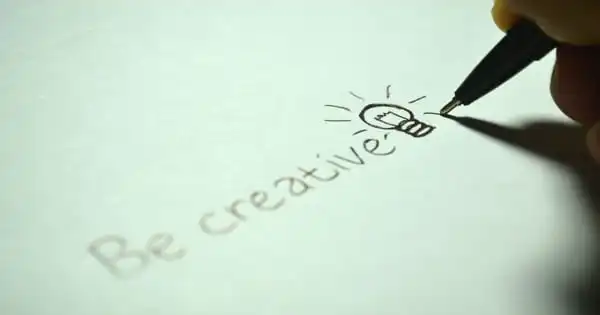Researchers have found a new strategy for teaching individuals to be creative, one that appears to be significantly more effective than current methods of stimulating invention. Based on narrative theory, this innovative strategy encourages individuals to be creative in the same way that children and artists do: by making up stories that envisage alternate worlds, shift perspective, and generate unexpected actions.
The narrative technique works by acknowledging that we are all creative, according to Angus Fletcher, a professor of English and a member of The Ohio State University’s Project Narrative.
“As a society, we dramatically undervalue the creativity of children and many others because we are concerned with the notion that some individuals are more creative than others,” Fletcher explained. “However, the reality is that we just aren’t training creativity in the appropriate way.”
In a recently published essay in the Annals of the New York Academy of Sciences, Fletcher and Mike Benveniste, both of Project Narrative, explored the narrative method of fostering creativity. The narrative technique was effectively employed by the two researchers to instruct members of the United States Army’s Command and General Staff College. Based on his methods, Fletcher created a publicly available training guide for officers and advanced enlisted people.
Creativity does not entail precisely predicting the future. It’s about allowing yourself to be open to conceiving profoundly alternative possibilities. By doing so, you will be able to respond to changes more swiftly and nimbly.
Professor Angus Fletcher
They have also collaborated with the University of Chicago Booth School of Business, the Ohio State College of Engineering, and other Fortune 50 corporations to teach creativity to their employees and students. The present cornerstone of creativity training is the divergent thinking technique, which has been in use since the 1950s. According to Fletcher, it is a “computational approach” to creativity that sees the brain as a logic computer.
It works through activities that aim to improve working memory, enhance analogical thinking, and promote problem-solving abilities, among other things. However, diverse thinking hasn’t produced the desired consequences, according to Fletcher. One key concern is that its computational technique is based on data and information about previous difficulties and triumphs.
“What it cannot do is assist individuals prepare for future challenges about which we know very little. It is incapable of devising truly unique activities “According to Fletcher. “However, the narrative machinery of the human brain can.”
Many of the approaches used by authors to generate stories are used in the narrative method of creativity training. One method is to create new worlds in your head. Employees in a corporation, for example, would be asked to consider their most peculiar customer and then picture a world in which all of their customers were like that. What impact would that have on their business? What would they have to do in order to live?
Another strategy is perspective-shifting. An executive in a corporation may be urged to solve a problem by thinking like another member of their team. The objective of utilizing these tactics and others like them, according to Fletcher, is not that the events you imagine will actually occur.
“Creativity does not entail precisely predicting the future. It’s about allowing yourself to be open to conceiving profoundly alternative possibilities “he stated. “By doing so, you will be able to respond to changes more swiftly and nimbly.”

According to Fletcher, the narrative approach of educating creativity through storytelling is similar to how young children are creative – and evidence suggests that young children are more imaginatively creative than adults. According to studies, children’s capacity to complete creative tasks declines after four or five years of schooling. When children reach this age, they begin extensive logical, semantic, and memory instruction. According to Fletcher, the story approach to creativity can help people rediscover the creativity they may have lost as they moved through school.
One advantage for companies that train their employees to be creative is that they no longer need to seek out “creative individuals,” he says. “Trying to hire creative people produces complications since the persons identified as creative by leaders are nearly often people who are similar to themselves. As a result, it encourages conformity rather than uniqueness “According to Fletcher.
“It is preferable to hire a varied collection of individuals and then train them to be innovative. This fosters a culture that recognizes that there are already creative people in your organization who are underutilized.”
While this story technique of creative training has gotten excellent feedback, Fletcher and his colleagues have begun a more thorough evaluation. They are running randomized controlled trials of the creative curriculum on over 600 US Army majors enrolled in the Command and General Staff College. In addition, they are continuing to collaborate with new groups, such as the Worthington Local School District in Ohio.
“Teaching creativity is one of the most useful things you can do in the world because it is just coming up with fresh answers to issues,” he says.
This innovative way of educating creativity, according to Fletcher, “could only have arisen from Ohio State’s Project Narrative. Project Narrative is all about understanding how stories work in the brain. It’s the basis that enabled us to put together this new way of thinking about and training for creativity,” he explained. “And Project Narrative exemplifies the power of imagination.”
















